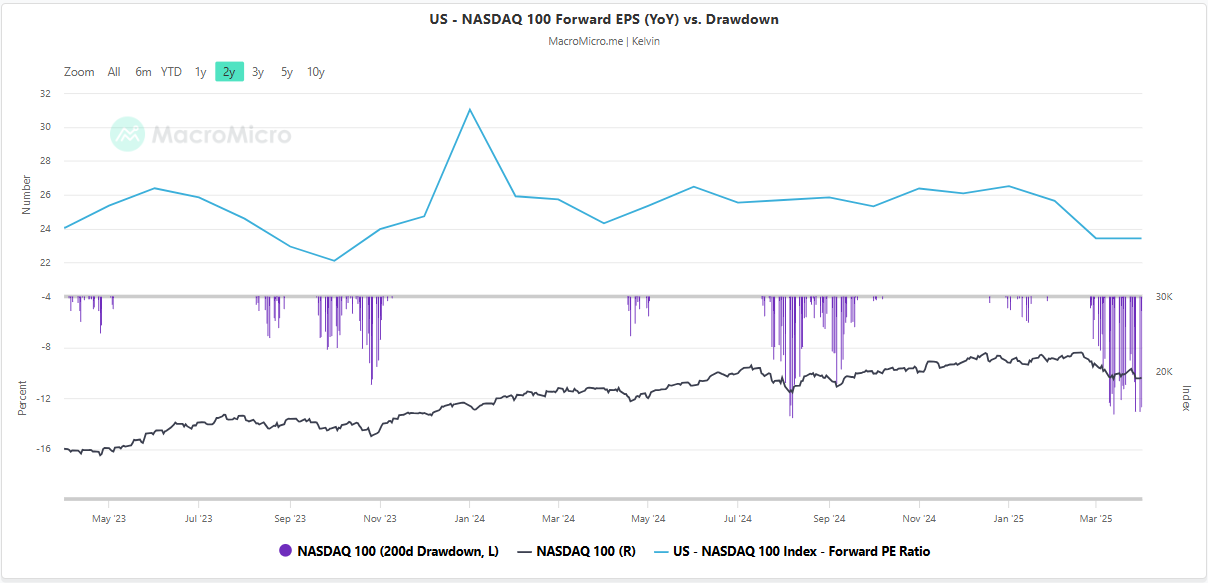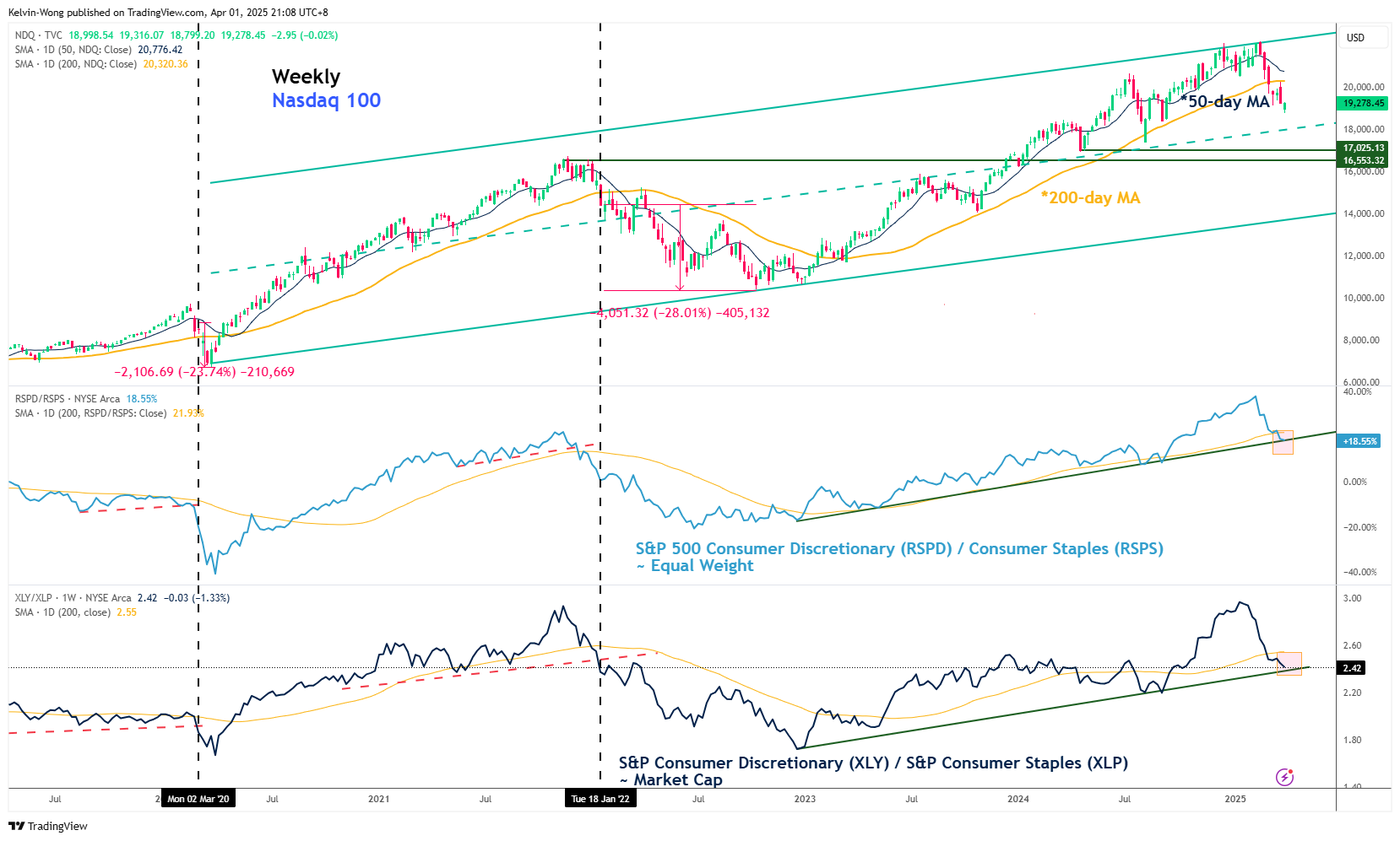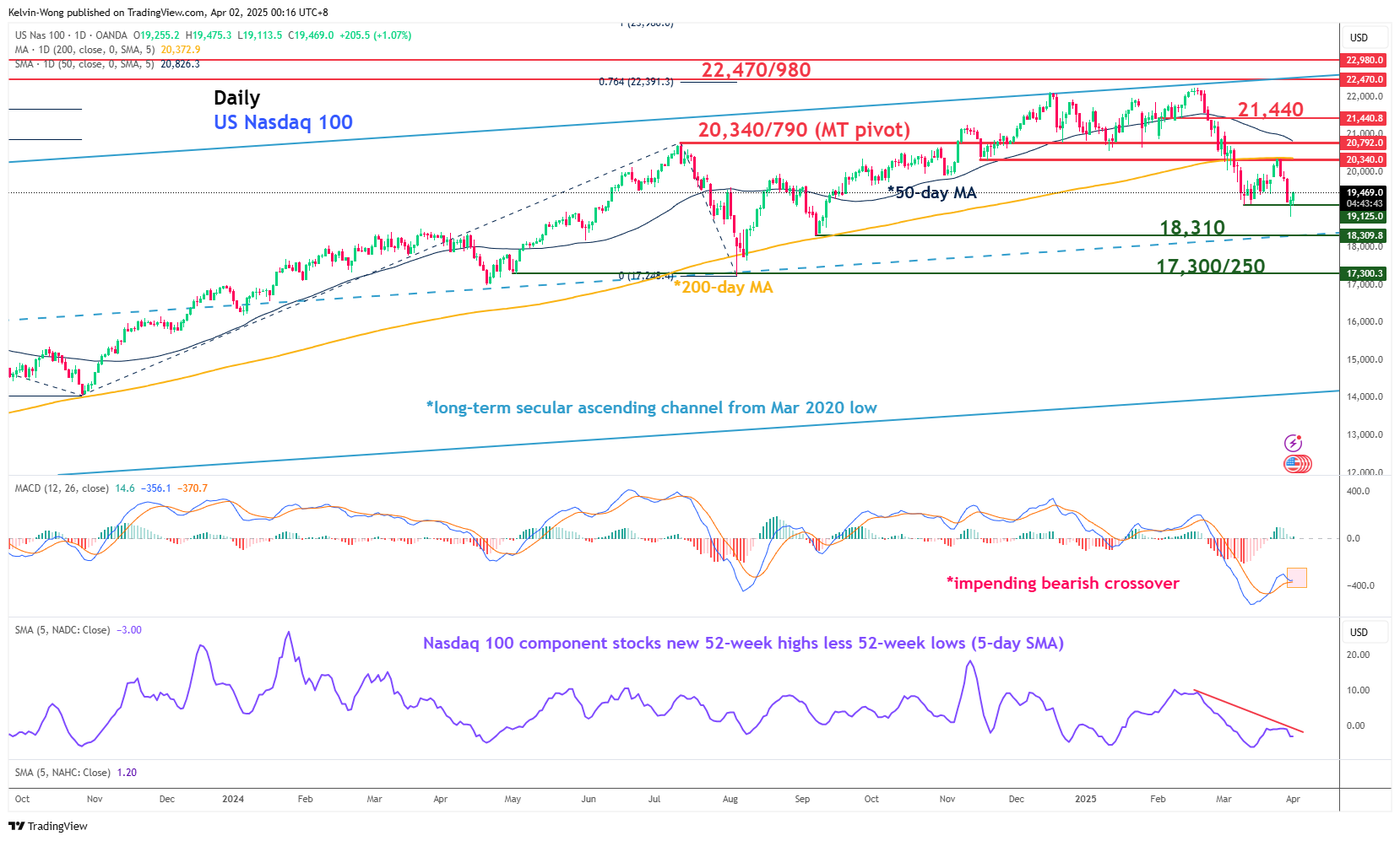This is a follow-up analysis of our prior report, following which the price actions of the Nasdaq 100 CFD index (a proxy of the Nasdaq 100 E-mini futures) have managed to stage a rebound of 3% before it stalled right at the 20,340/790 key medium-term pivotal resistance and 200-day moving as expected (printed an intraday high of 20,363 on 26 Mar).
Thereafter, it plummeted by 8.2% to print an intraday low of 18,818 on Monday, 31 March, and ended the 1stquarter of 2025 with a loss of 8.6%, its first quarterly loss since July 2023.
Cheaper valuation after three-month sell-off

This latest round of weakness seen in the Nasdaq 100 since the start of 2025 has led its valuation to dip to a “cheaper level”. Its 12-month forward price-to-earnings ratio has declined to 23.43 from a high of 31.02 printed in January 2024 (see Fig 1).
In addition, its 200-day drawdown from its recent peak has reached a level of -13.06 on 31 March, where such a level in the past has led to medium-term recoveries in the Nasdaq 100. Thus, has the recent three-month decline seen in the Nasdaq 100 CFD index hit an inflection zone that may trigger a medium-term bullish reversal as US President Trump’s “Liberation Day” announcement of reciprocal trade tariffs against “all countries” looms on Wednesday, 2 April?
Major underperformance of the US consumer discretionary against consumer staples

Based on sector rotation analysis, the latest observations seen on the relative performance of the US S&P Consumer Discretionary sector (cyclical) and Consumer Staples sector (defensives) suggest that the ongoing weakness on the Nasdaq 100 may not have ended.
Both the equal and market cap-weighted ratios of the US S&P Consumer Discretionary against Consumer Staples sectors exchange-traded funds have reversed down and broken below their respective 200-day moving averages. Currently, both ratios are challenging their respective major ascending trendline supports (see Fig 2).
A break below these major trendline supports may trigger significant multi-month corrective decline sequences, where similar past occurrences on the week of 2 March 2020 and 18 January 2022 led to losses of 24% and 28% respectively on the Nasdaq 100.
Impending MACD bearish crossover condition in Nasdaq 100

The daily MACD trend indicator of the Nasdaq 100 CFD index (a proxy of the Nasdaq 100 E-mini futures) has flashed out an impending bearish crossover condition below its centreline, which suggests that the medium-term downtrend phase in place since its current 18 February 2025 all-time high remains intact.
A break with a daily close below the 19,125 key intermediate support may trigger another round of potential impulsive down move sequence to expose the following medium-term supports at 18,310, and 17,300/250 (see Fig 3)
However, a clearance above 20,340/790 key medium-term pivotal resistance zone invalidates the bearish scenario for the next medium-term resistances to come in at 21,440, and 22,470/980.
